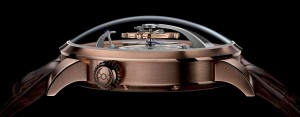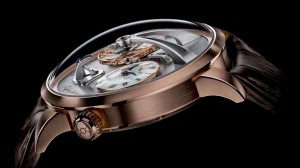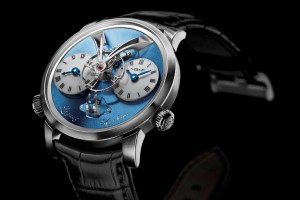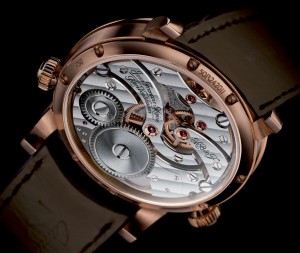This is a Swiss replica watches that was presented back in 2010, but I’m writing it about it today just because it is a good illustration of the fact that, even in a mature industry such as watchmaking, real innovation is still possible, and when you see it, it brightens the day of any watch lover.
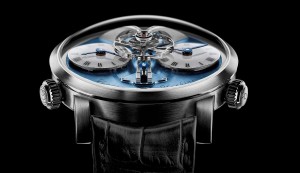 There are many different styles of innovation. For some brands, it’s just about the design of the case and dial, because they buy in movements made by external suppliers. For other brands, it’s an infinite process of very small variations on their consolidated house style. A few others simply copy what someone else has done. And lastly, there are a few brands, like MB&F, who are capable of starting from a clean slate and designing something completely new, from a new concept.
There are many different styles of innovation. For some brands, it’s just about the design of the case and dial, because they buy in movements made by external suppliers. For other brands, it’s an infinite process of very small variations on their consolidated house style. A few others simply copy what someone else has done. And lastly, there are a few brands, like MB&F, who are capable of starting from a clean slate and designing something completely new, from a new concept.
Maximilian Büsser’s concept for the Replica MB&F Legacy Machine watches was to think how innovation could have looked back in the 19th century. In other words, translating a contemporary idea to the round case and classical materials of watchmaking. The fact that the result looks more modern than the watches of many celebrated high-end brands just shows how deeply most watchmaking is linked to history and how many new products still look like something out of the 1800s.
Balance wheel at centre stage
In his introduction to LM1, Maximilian Büsser mentions Jules Verne and the Eiffel Tower as his inspiration, but he’s being modest because the real innovation is the idea of taking the balance out of the movement and placing it at centre stage, suspended above the dual dials with the time indications, suspended from a futuristic, arching bridge. The balance wheel is larger than most at 14 mm in diameter, and its oscillation frequency is the lowest commonly used in watchmaking, 2.5 Hertz, 18,000 vph. It becomes a constant performance, a horological fireworks display right there on your wrist. Most brands reserve this sort of treatment for a tourbillon balance, but this piece shows that it’s not necessary to build a tourbillon to create an eye-catching scene.
Two completely independent time displays
The watch is functionally interesting too. The movement drives two independent displays, one for local time (on the right-hand dial), one for home time. Or any other time you want or need. Both can be independently adjusted and so the second time display can take account of the various one-hour, half-hour and quarter-hour time zones in the world – unlike many GMT watches in which the second time zone can be adjusted only in one-hour units. If I were able to afford a cheap replica watches like this, I would probably set the right-hand dial to “Ambrose time,” five minutes fast (when you write about watches you get paranoid about punctuality) and the left-hand dial to the real time. There are two crowns for setting the two displays, and the crown at 4 o’clock is also used for winding the mainspring. The 45-hour power reserve is shown by the unusual vertical indicator at bottom centre. In the image below, the limited-edition platinum version.
Movement by Chronode
The movement visible through the sapphire caseback was designed for MB&F by Chronode, with movement design by Jean-François Mojon (who founded Chronode in 2005) and his team, and aesthetic design by independent watchmaker Kari Voutilainen. The case is in red gold, white gold or platinum, 44 mm in diameter, and 16 mm thick at the centre. Considering the design, it’s a fake watches uk of very moderate size. The finish mirrors classical watchmaking, with hand-crafted polished internal bevels, Côtes de Genève and hand-engraving. The watch has a black or brown alligator strap with buckle matching the case material. The gold versions 01.RL.W (red gold) and 01.WL.W (white gold) cost about €84,000, while the 33-piece limited edition 01.PL.W costs €98,000.

